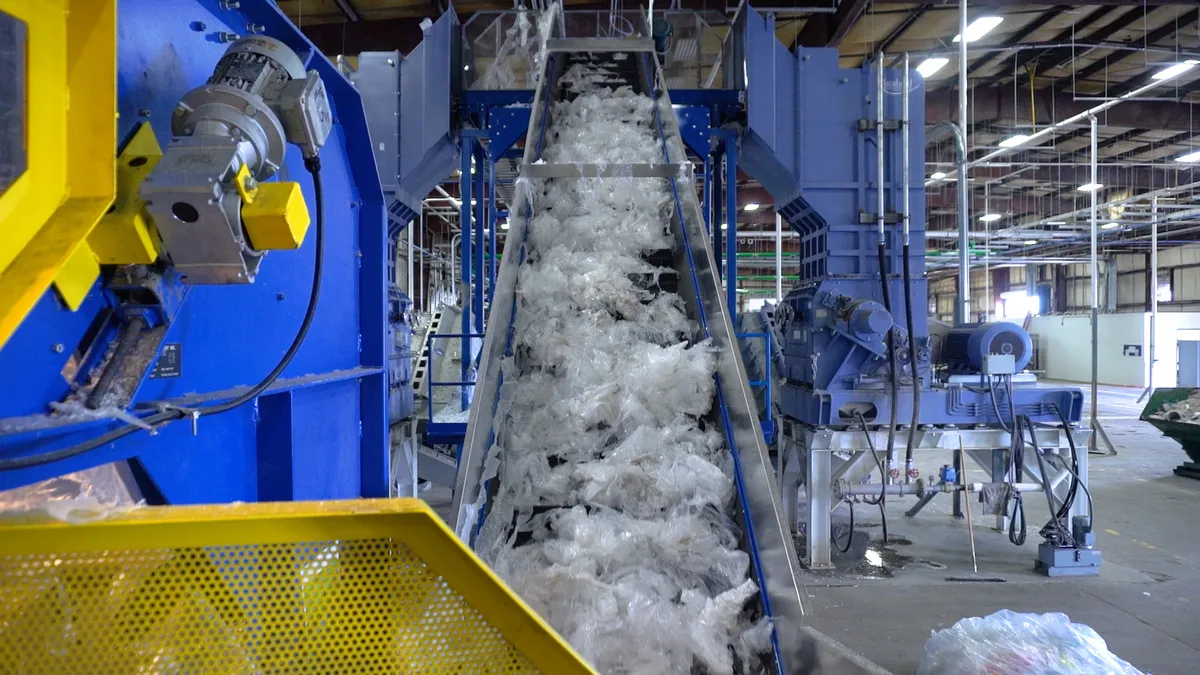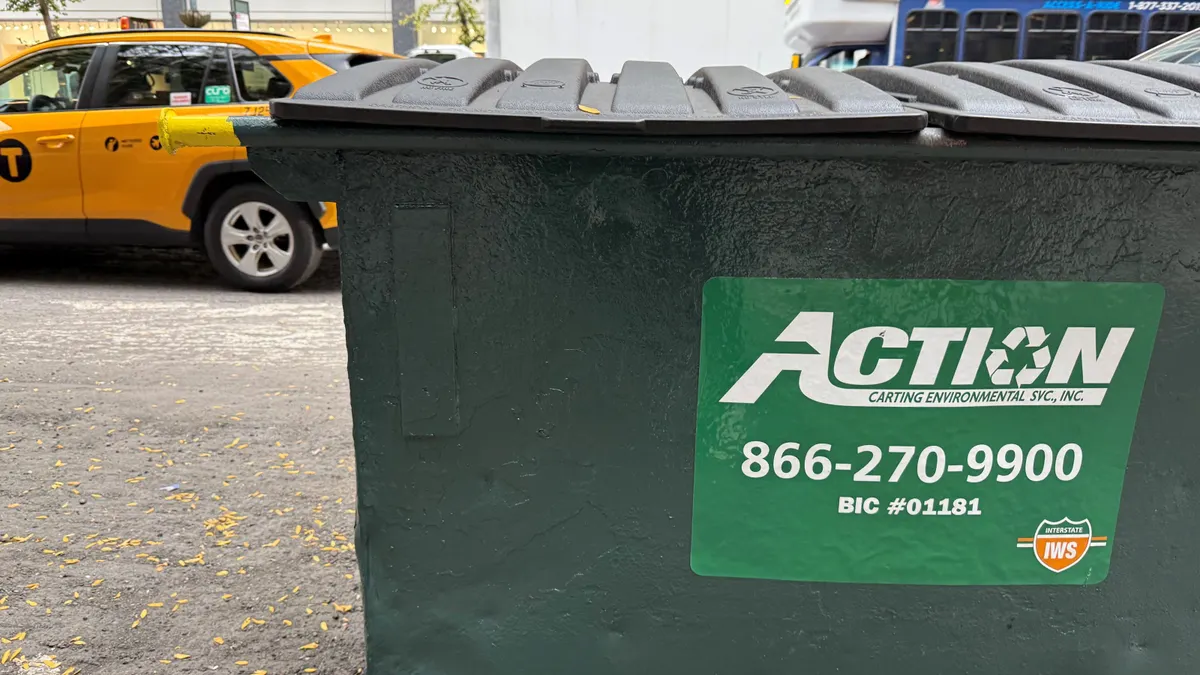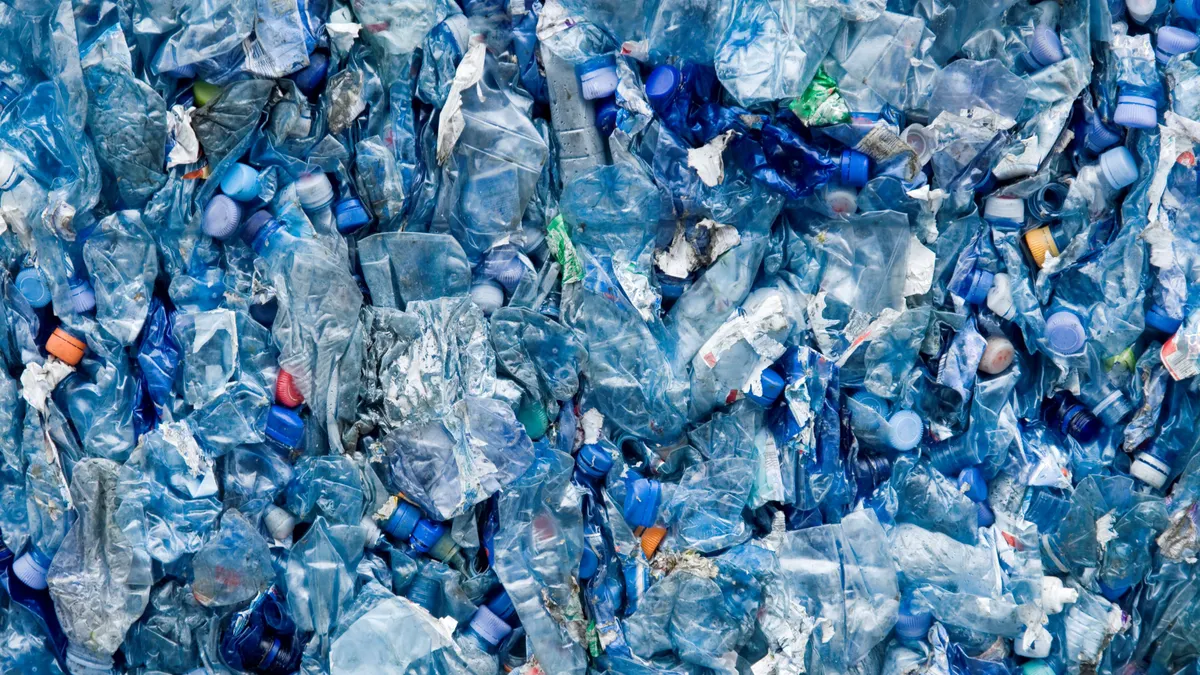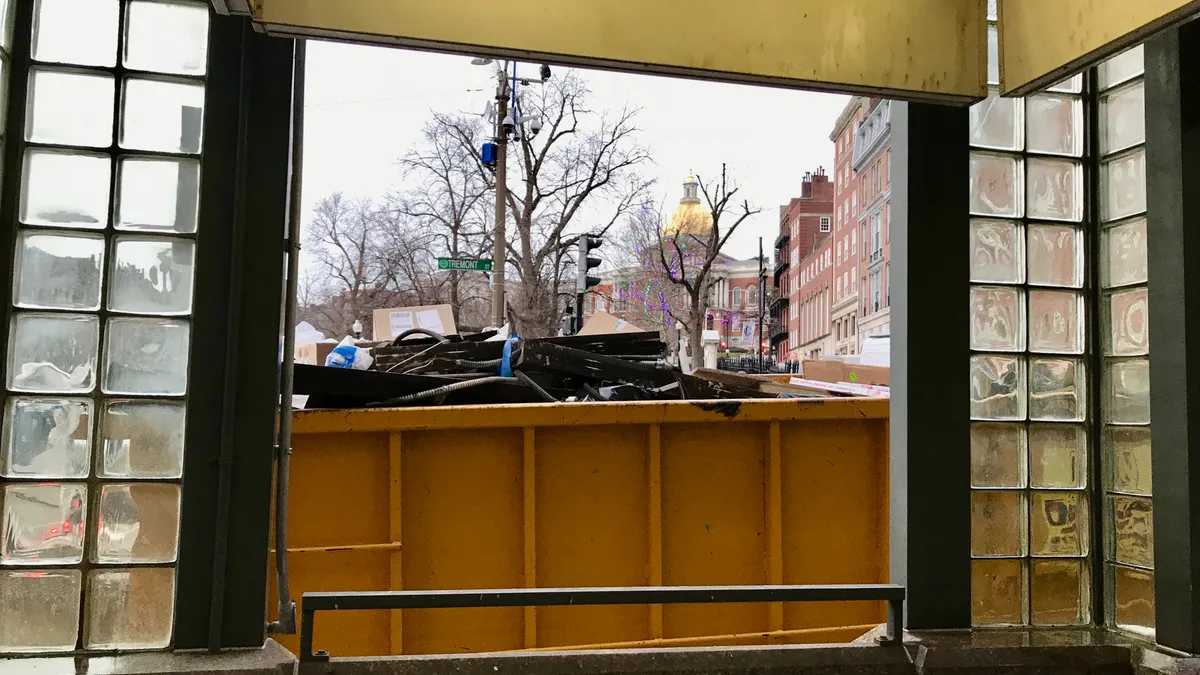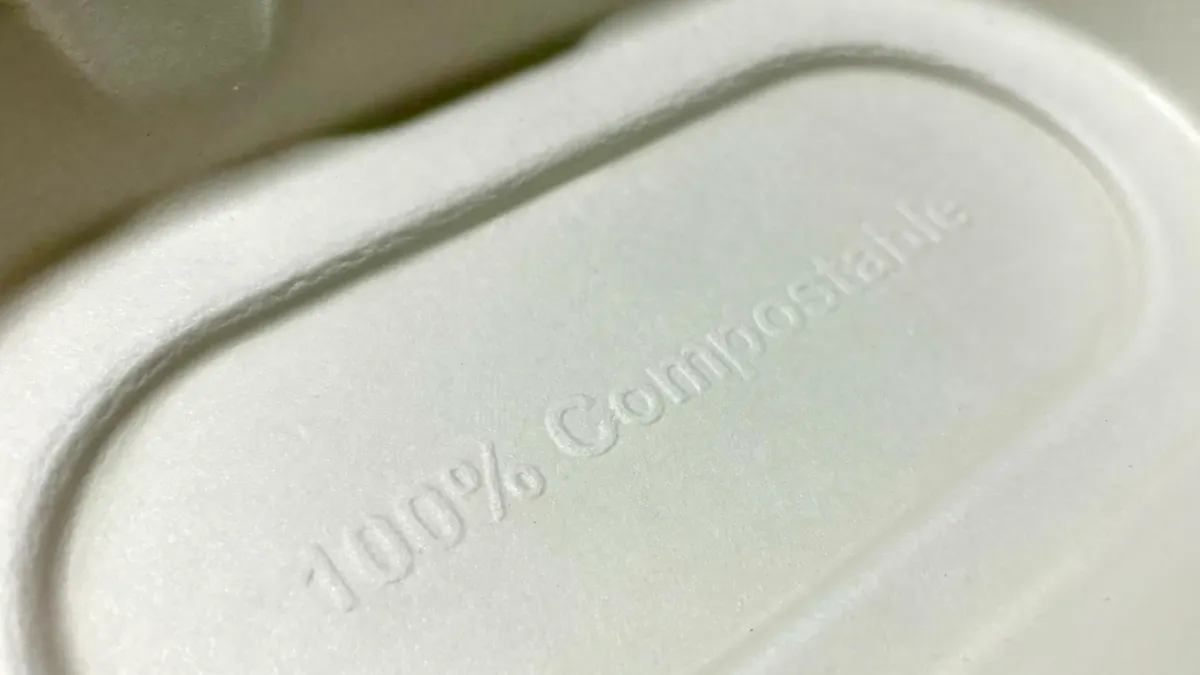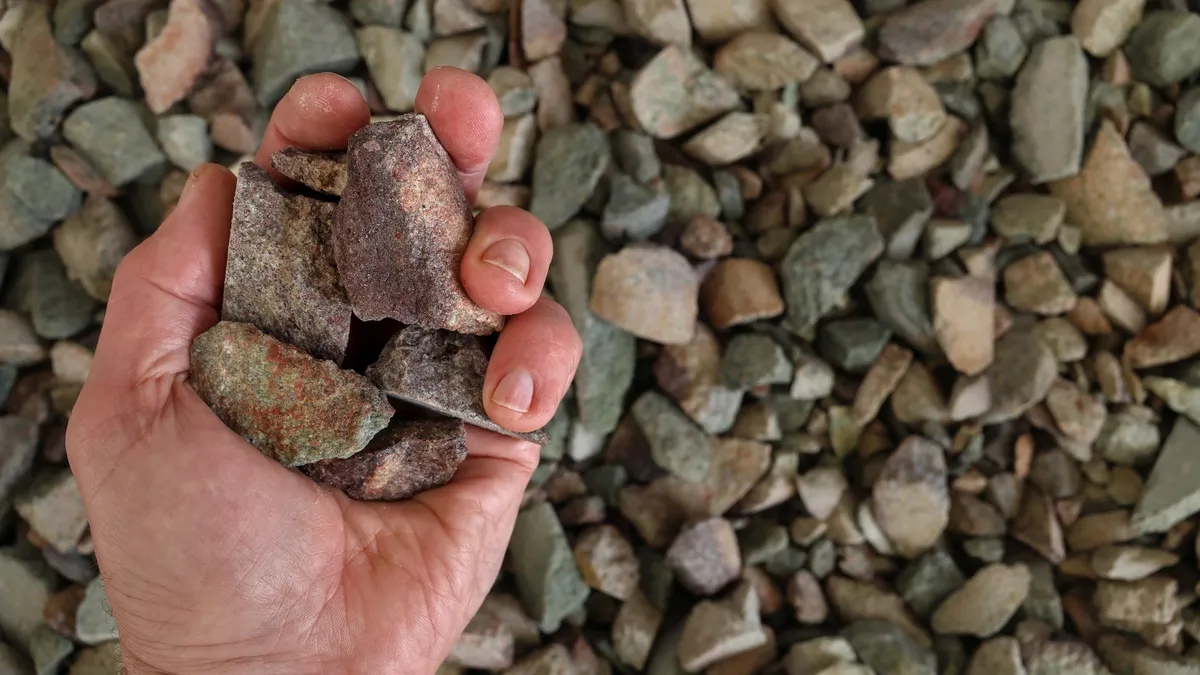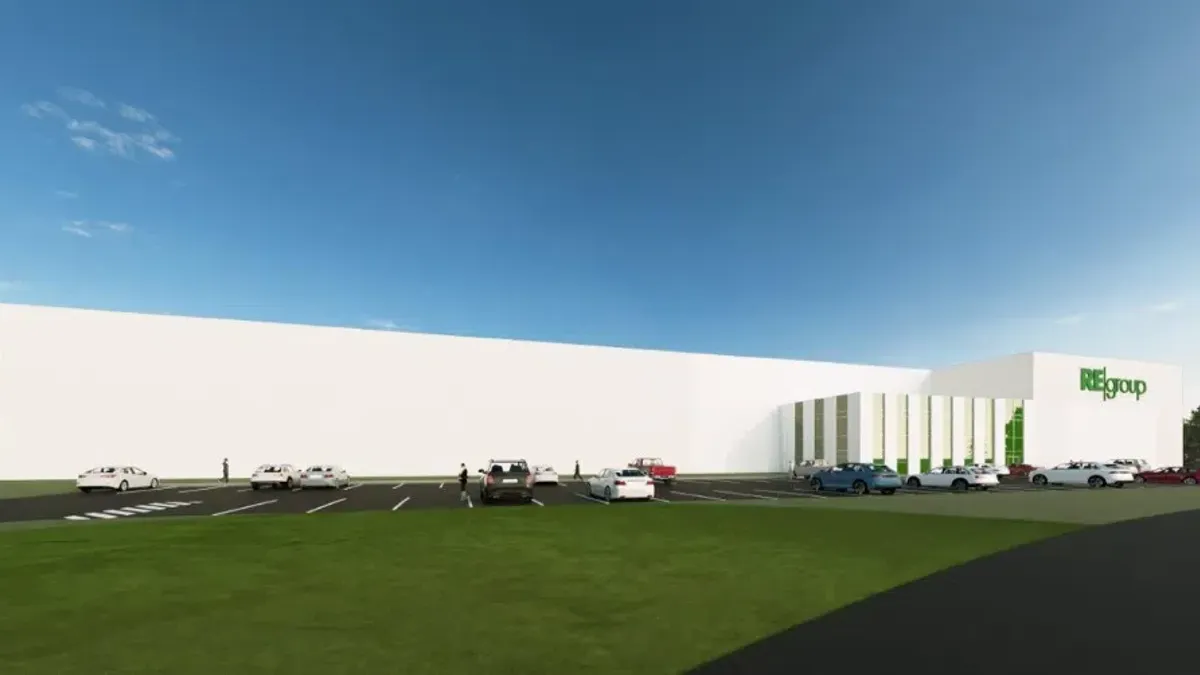WM is the latest U.S. recycler to demonstrate it’s getting more directly involved in secondary processing infrastructure after announcing Tuesday it will acquire assets from Avangard Innovative. While the initial focus is on plastic film, the transaction could also have broader implications for the future business model of recycling.
Following regulatory approval, WM is set to acquire all of Avangard’s U.S. assets — including its brokerage business, equipment sales division and related facility assets — to create an independent entity called Natura PCR (a name previously used for a specific division). The new company will be primarily owned and controlled by WM, with a minority stake held by Avangard and affiliated entities. The goal is to scale up multiple Avangard facilities to accept plastic films and shrink wraps and eventually create 400 million pounds of postconsumer resin pellets per year.
Films, specifically LDPE and and LLDPE, make up a notable share of the plastic waste stream, but their recycling rates remain very low. In 2020, Dow announced an agreement to purchase PCR pellets from an Avangard facility in Texas for use in a film product line called REVOLOOP. Dow has no financial stake in this new venture, but it lauded the new deal and WM has previously worked with the company on plastic issues.
Waste Dive spoke with WM Vice President of Recycling Brent Bell shortly after the deal was announced to learn more about how this will change the company’s film recycling options, what it means for a potential entry into the chemical recycling space, how it will be different than less successful secondary processing ventures in the past and more.
The following interview has been edited for clarity and brevity.
WASTE DIVE: WM handles large volumes of different types of plastic. Why did it make sense to focus on this particular stream and have more of a role in the infrastructure?
BRENT BELL: This one seemed interesting, because it looked like there was a need in the marketplace for domestic film outlets. We have a lot of large national account customers, including the retail store distribution centers, and we obviously manage a lot of the film for them today. To be honest, we were struggling to find good sustainable homes for that material. Avangard was one outlet, but they they were located in Texas, they had a fairly small footprint and were relatively new to this space — they've only been really doing it for a couple years now.
So we thought, what better investment than to help a partner like Avangard that we've been with for a long time — we've dealt with them for over 20 years — to match up our supply with their expertise? We’ll bring some capital infusion to grow this business so that we can increase the amount of film that gets recycled and help our customers tell their circularity story.
So it sounds like some of your material had been going to them, but not all, and the goal now is to scale this up so all of your film can end up in this network?
We wanted to be self dependent, if you will, for film outlets. The rigid plastic has got a fairly mature space for recycling, especially in the U.S., but the film side is not very mature today. So that's why we love the partnership.
I recall a few years ago WM shifted to more domestic markets for its plastic, but commercial film was one of the exceptions being exported. Is that still the case?
That's correct. We said residential plastics would not be exported, but we always had this film hanging over our head if you will. So this essentially will solve that problem. With the ramp up in five years to generate 400 million pounds of pellets from PCR film, that's going to hopefully more than fit the needs of our customer base as they continue to grow and recycle more film in their stores and distribution centers.
In addition to the Texas site, Avangard had previously talked about a related facility in Nevada. Where does that stand?
Right now the Texas one is getting expanded and then there's one in the Midwest that has yet to be announced, but probably will be shortly. The one in the Midwest will be another large facility. So between those two is where we're seeing this projection of 400 million pounds in five years ... There's nothing on Nevada. Maybe later, but right now we don't have that in the plan.
In thinking about what you can do differently, is the idea that WM has more resources and can grow this more quickly than if the business had stayed with Avangard?
Yeah, if you look at it, we've been a supplier of theirs for the last 20 years. Not a very large part of our material went down there, but I think from their position we were a large supplier into their facility. So we always have discussions with them when we see how much material we have to find homes for. They have a great team with leadership and expertise in this space, but probably haven’t had the funding in the past to really grow it to the levels to be successful.
So if the deal includes everything Avangard does in the U.S., what does that mean for their chemical recycling plans with Honeywell at the Texas complex?
They've made some announcements, but there's nothing that's binding to the new company Natura PCR. Theoretically, if we chose to go down that path that could open up those doors.
We just did the signing last week. The closing will be, once the HSR review is done, in a month from now. I would expect after the closing we'd have conversations with Honeywell and see where they left off and see what the next steps are on that program. We have to understand more about it.
It's something that we're interested in evaluating. We have our own views on that space. We'll see how they line up with what Honeywell looks at and what the new Avangard company, Natura PCR, wants to do moving ahead. But right now, the focus is on getting their mechanical recycling up and running and successful.
In thinking about feedstock beyond the commercial film, does this also get you into residential film like grocery bags or shrink wrap that might get collected in drop-off programs?
We collect some of that today, to some degree. On the residential side we get a lot of it in our plants today, even though it's technically not accepted.
At our MRFs, we’re doing about $275 million this year and about $800 million over the next few years of investing in automation. As we're doing those automation investments, we're definitely keeping our eye open for [whether] can we accept more plastics in our residential stream — including perhaps film and flexible. So we're interested in that space as well, but we haven't worked with any municipalities that accept that today. We want to make sure the equipment can handle it, but that could be something down the line.
We're actually baling film in Chicago today and it's not accepted. We're just seeing what does the material look like, how dirty is it and is Natura PCR a potential avenue.
Over the years we’ve heard about the film recycling business being hit or miss. It’s not always that valuable, there aren’t always great markets and on the residential side some people are skeptical it’s even making it from drop-off sites to the end destination. What gave you confidence to get into it today?
So I think when you look at the rigid space, it’s fairly mature. The customers that are in that space — whether it's HDPE, whether it's PET — those are good customers we've had for years and they're fairly reliable on what they'll take.
But when you look at the film side, that's where it's a market that's not very mature, that needs to be developed further. So when we looked at that space and said, ‘what's a grade of plastics that really needs some help?’ clearly film is the one domestically that needs more outlets.
When you also align that with the EPR laws that are passing, the minimum content laws that are passing, our view is there's going to be a need for low density PCR pellets for folks to put back into their products to make the minimum content regulations.
We now have a couple recent examples of WM getting involved in secondary processing, including Continuus Materials. Are you looking for other opportunities to get further involved in secondary processing for plastics or other commodities?
I think the answer is yes. When you really think about where we should be in five years, we're gonna be in some new markets that are underserved today. We're developing our traditional facilities and doing a big investment in those. So what's the next play in the vertical space and how does that look?
Now, as a reminder we did PET-to-flake 15 years ago [in a partnership with Coca-Cola at multiple facilities]. Maybe that was a little bit too soon or ahead of its time. So now we're looking at how can we really meet more of these circularity solutions for our customers and be able to take their film and work through a process to move it back onto their shelves in new garbage bags, whatever it may be. That's really the focus. How we can solve these circularity solutions for our customers and increase the plastic recycling rate at the same time? So that combination is what's going to drive us to get into these other verticals, I believe.
What makes the market different now from when WM tried those secondary processing investments with companies like Coca-Cola or DuPont in the past?
While you could argue there's a push on ESG and corporations have sustainability goals, the real meat behind it — or the floor, if you will — is these regulations are passing. There's more and more states doing minimum content and EPR regulations. You can't run from that. There's gonna be a need for recycled content.
We're going to try to do our part to make sure that the brands can't say there's not enough material out there. Because today they can say that. They're accurate, there's not enough material to meet some of their goals they have today. And so we're just trying to do our part to keep up with that, whether it's their goals or the regulations that we're seeing in the pipeline. We think that this material is going to have an increased value for our shareholders and the return on these assets will pay off over the course of time.


